6 Types of Email Marketing Campaigns Your Company Needs
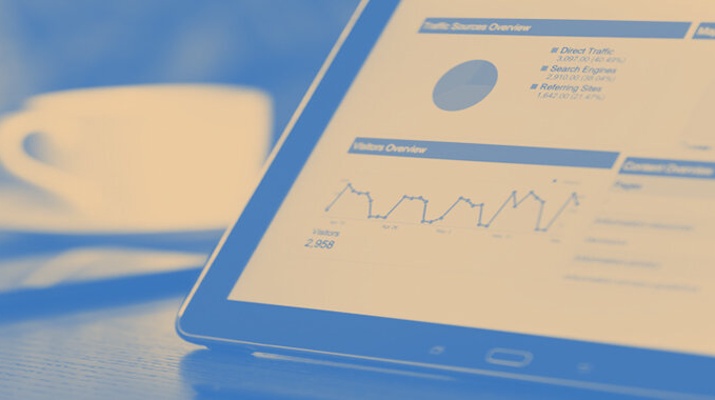
6 Types of Email Marketing Campaigns Your Company Needs
Whether you're new to email marketing or you've been doing it for a while, you already know that email is one of the best ways to sell — and intelligent businesses look for new ways to build customer relationships and boost revenue.
The Litmus State of Email report shows that 67% of businesses use email marketing tools for drip campaigns, 82% for triggered emails, and 56% for segmentation.
Nielsen's Annual Marketing 2023 Report also shares that 50% of marketers consider email a compelling marketing channel. It’s not a secret that effective email marketing strategies enable you to engage customers better and persuade them to spend more.
With that in mind, we’ll look at six types of email marketing campaigns you need to implement in your business to boost engagement and sales.
Sometimes, boosting email performance takes outside help. Find the right email marketing agency on The Manifest to take your marketing campaigns to the next level.
What is an Email Marketing Campaign?
An email marketing campaign is a series of emails sent to various prospects and existing customers to increase engagement and sales.
Effective email marketing campaigns have well-written subject lines, relevant and personalized content, and a specific call-to-action (CTA).
When creating your email campaigns, you'll want to segment your target audience so that each group can receive personalized content relevant to their needs and interests. That way, you can boost engagement and, eventually, increase your sales and revenue.
6 Email Marketing Campaign Types To Boost Customer Engagement and Sales
We typically send different marketing emails based on where recipients are in the sales funnel. We'll look at six of the most common email series to help you build an effective email marketing campaign:
1. Welcome Email Series
Welcome emails are the first emails you send customers after they buy something from your website or subscribe to your newsletters. An Invesp infographic shares that 74% of users expect a welcome email after subscribing to your email list.
So, to make sure your emails land in the recipient’s inbox, you need a reliable email marketing platform like Sender that offers high email deliverability, email templates, and a drag-and-drop email builder to help you create welcome emails in minutes.
That said, a welcome email is your business's first impression with new subscribers. And you can use these messages to tell your brand’s story and share company news or crucial links.
Here's an example from Spotify:
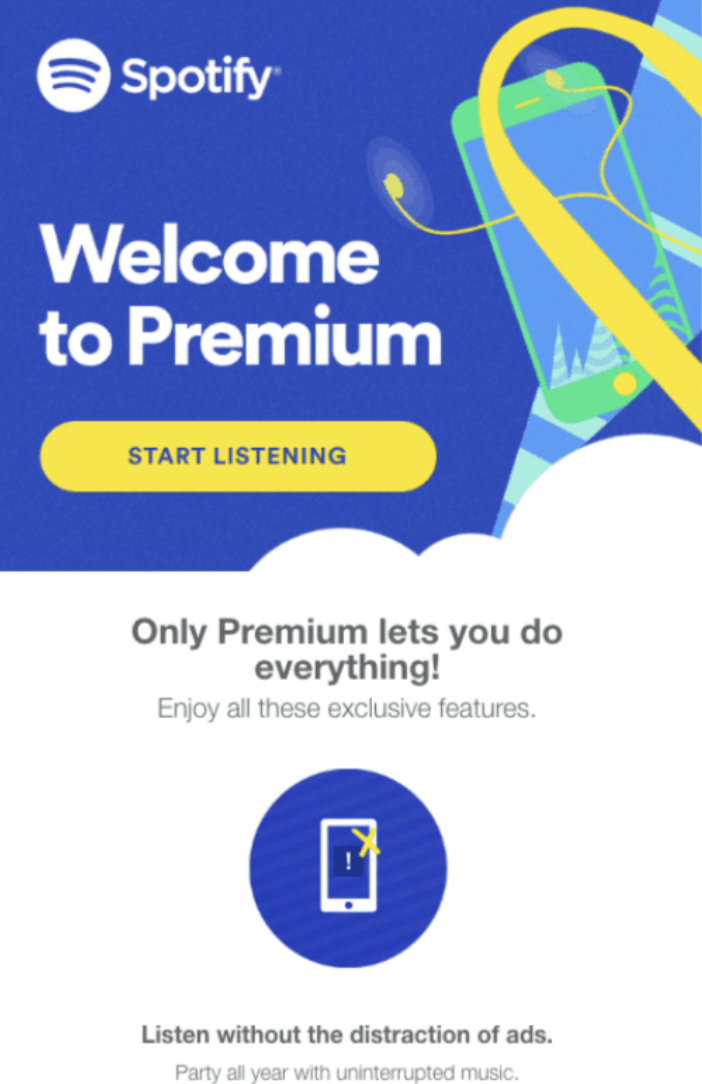
Source: Spotify
Spotify’s welcome email includes all the benefits premium subscribers get. The benefits include playing music without ads interrupting and listening on the airplane or train — all incredibly appealing to their target audience.
2. Lead-Nurturing Email Campaigns
Lead-nurturing emails are messages you send to prospects as they move through the sales funnel to encourage them to convert. Brands that successfully nurture their prospects generate 50% more sales-ready leads at a 33% lower cost.
Lead nurturing campaigns focus on establishing customer relationships, building trust, and persuading customers to purchase. That's why these emails have a response rate that's 4–10 times higher than standalone email blasts.
Here’s an excellent lead-nurturing email from Framebridge:
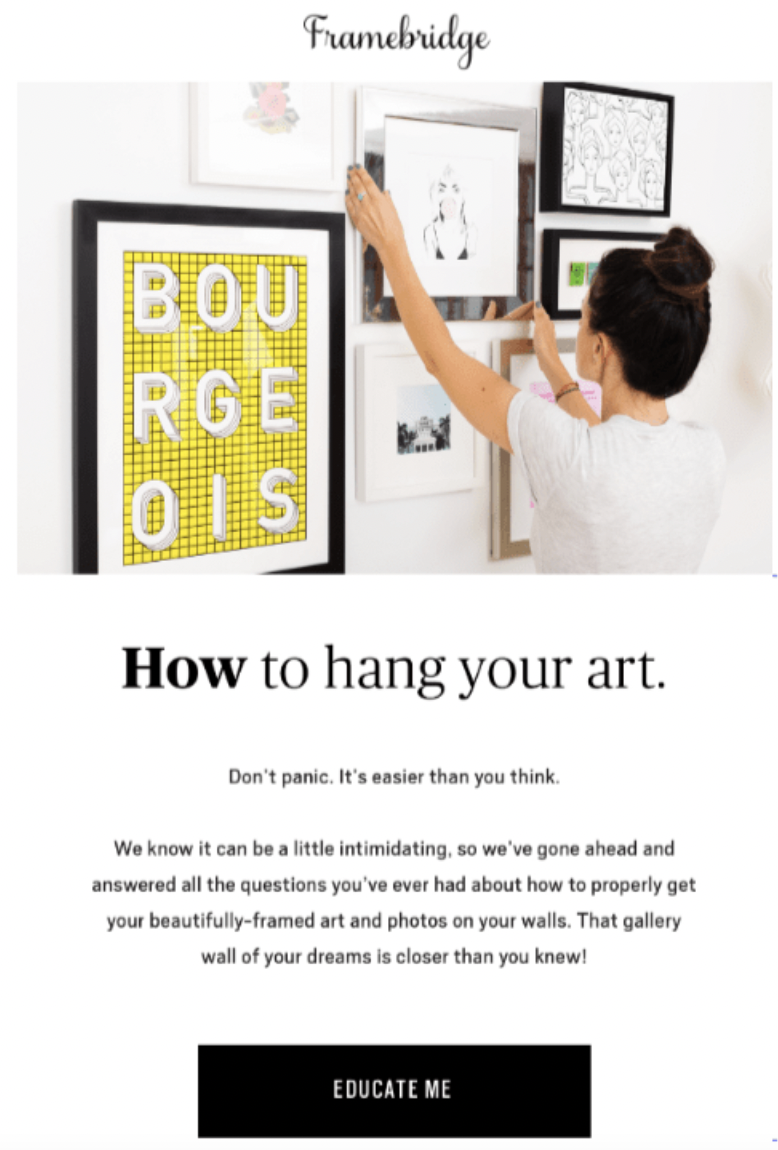
Source: Framebridge
Framebridge’s lead-nurturing campaign email teaches its subscribers a valuable skill — how to hang their art. By doing that, it can engage its customers and increase click-through rates.
3. Abandoned Cart Emails
Abandoned cart emails are messages you send to buyers who've added products to their shopping carts but have yet to check out. These emails are triggered by shoppers who leave the final checkout page or abandon the buying process at any point.
According to Barilliance, these messages have a high conversion rate of 18.54%.
Some customers abandon their carts due to a poor user experience — technical glitches, mandatory account creation, or extra fees at checkout. All these aspects cause friction for the shopper and make them reconsider their purchase.
Here's an abandoned cart email example from Winc:

Source: Winc
Winc uses a funny email to remind shoppers about their abandoned carts. The $20 discount is also an extra incentive for customers to check out immediately.
4. Transactional Emails
Unlike newsletters, transactional emails are triggered by a customer's action, usually related to product activity, commercial transactions, or account notifications. For example, the customer could have purchased in your online store or requested a password reset.
As a result, brands use transactional emails to send crucial information to recipients at different stages of the customer journey.
An excellent example of a transactional message is an order confirmation email sent after customers purchase an item from your e-commerce store. The marketing email usually has the buyer's confirmation details, including what they bought, the purchase total, and the estimated delivery date.
Here's an example from ASOS:
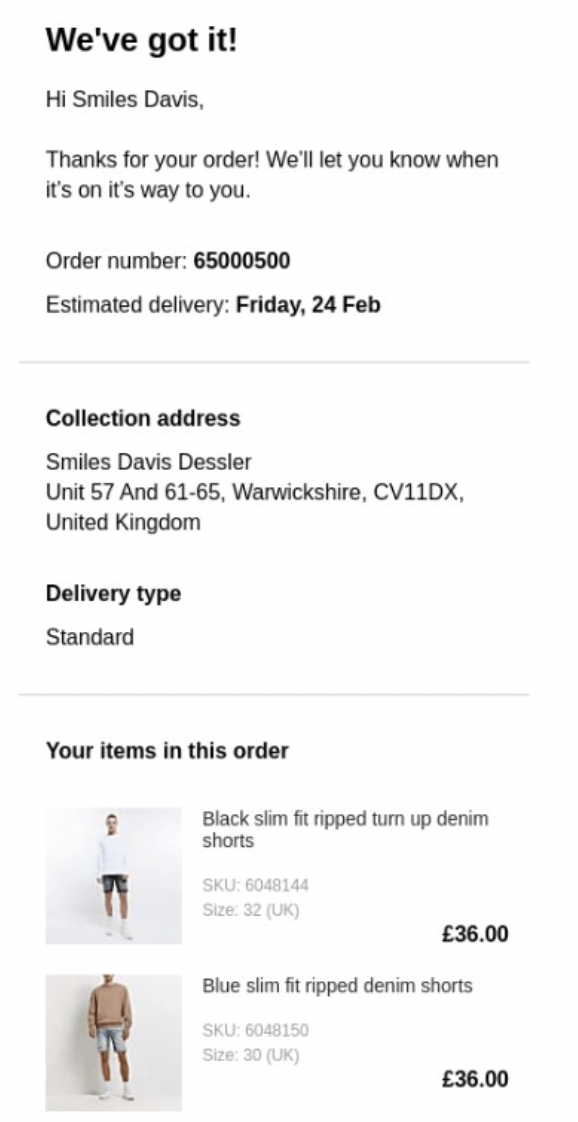
Source: ASOS
This simple email thanks the customer for purchasing. It then skips to the order confirmation details.
The message contains all the necessary information, such as the estimated delivery date, the collection address, and the products bought. As a result, the customer can immediately check and correct any errors in their order.
5. Survey Emails
Email surveys are messages you send to customers to ask for their feedback about your products or services. You can also use surveys to do market research, get a Net Promoter Score (NPS), and other metrics.
When you send survey emails, respondents should be able to access the survey at their convenience.
Here's an example from Lyft:
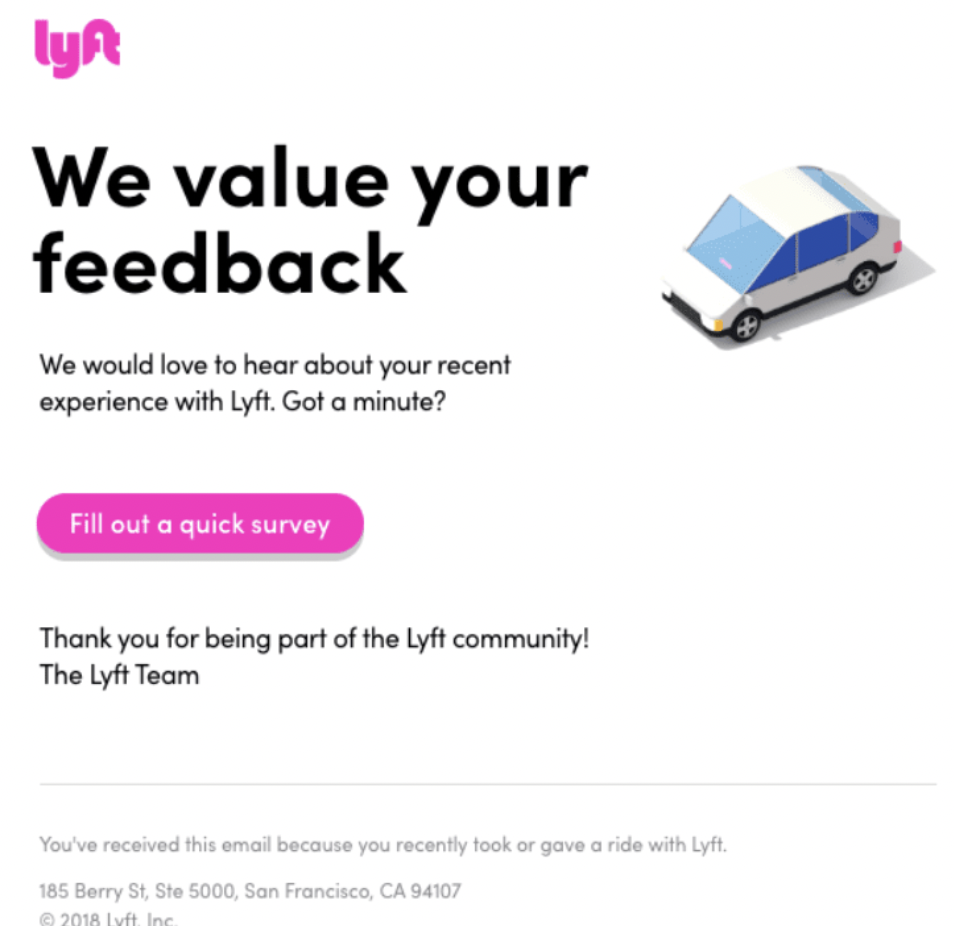
Source: Lyft
This survey email from Lyft is straightforward. The headline assures the customer that the brand values their feedback. The email copy then asks them to fill out the survey.
The CTA (call-to-action) button also stands out, making it easily clickable.
6. Re-engagement Emails
A re-engagement email (winback or reactivation email) is designed to re-engage users who've stopped engaging with your brand.
A re-engagement campaign has two objectives: Convince inactive email subscribers to continue opening and engaging with your emails or remove them from your list to keep it healthy.
When done well, reactivation emails can boost customer engagement and reduce churn rates.
Here’s an example from Animoto:
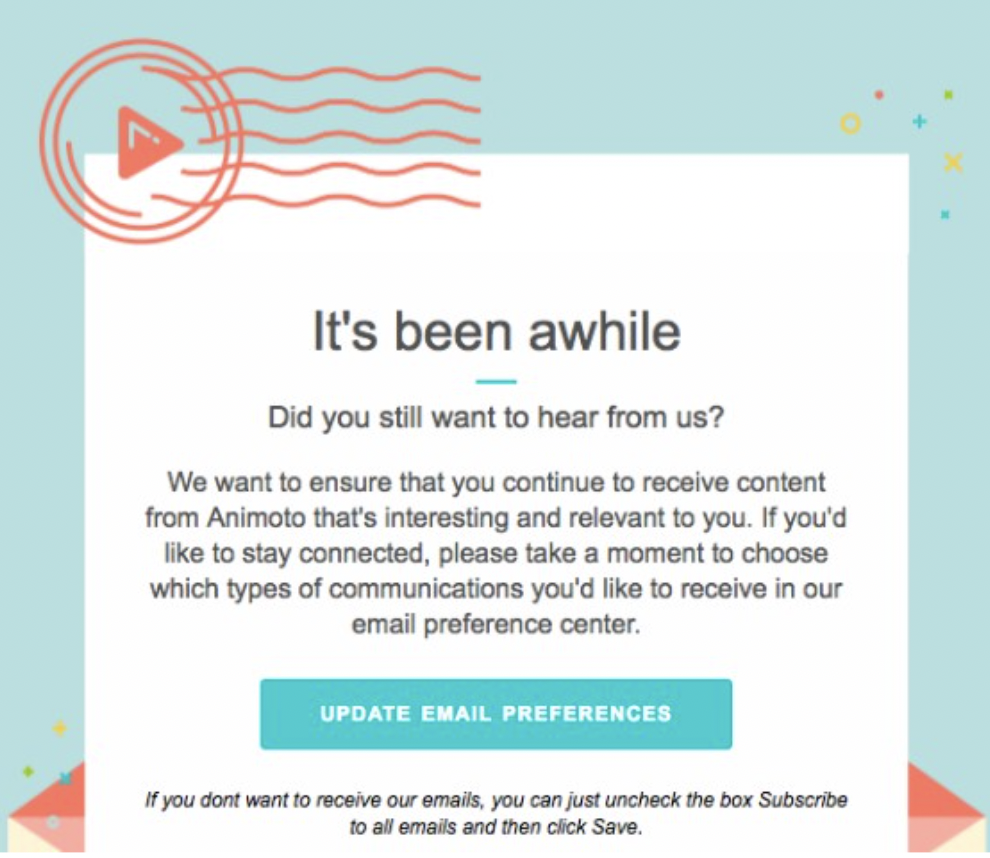
Source: Really Good Emails
Animoto asks its recipients a simple question: Do you still want to hear from us?
The email focuses on allowing inactive subscribers to update their email preferences using a prominent call to action (CTA) button that takes the user to the preference center.
Use Email Marketing Campaigns To Engage Your Customers
The type of email marketing campaign you send significantly impacts keeping your customers engaged — whether lead nurturing, re-engagement, or seasonal campaign.
Also, remember an email campaign isn't a one-time email. It's a way to engage subscribers multiple times using a strategic approach. So the email campaigns covered in this guide will help you develop an effective email marketing strategy to boost engagement and sales.
Find the best email marketing companies on The Manifest.
